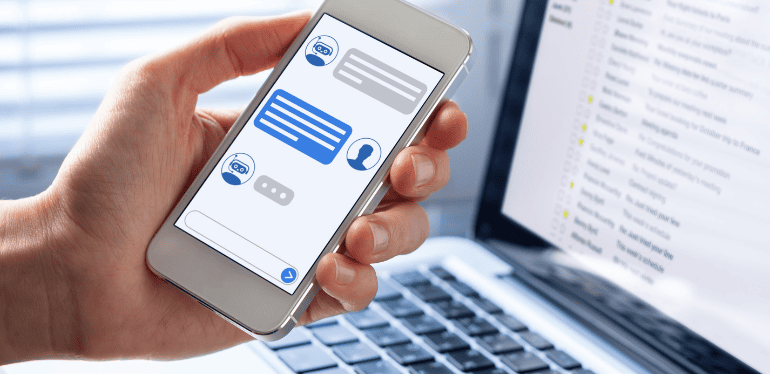Many of us have experienced the frustration of navigating complex websites, struggling to find the products, services, or information we need due to inadequate search functions. Traditional online experiences often miss the mark, lacking the personal touch and intuitive interaction necessary for a satisfying journey. Studies show that a staggering 88% of customers have had poor website experiences, leading to frustration and lost business. This highlights the need for a different approach, one that Natural Language Processing (NLP) can provide. NLP-driven solutions offer the personalized attention and streamlined experience customers desire, guiding users quickly to exactly what they need. In this article, we will explore the different ways NLP is revolutionizing customer experiences.
What is Natural Language Processing, and Why is it Crucial?
Natural Language Processing (NLP) is a field of artificial intelligence that enables computers to understand, interpret, and respond to human language in a way that is both meaningful and useful. It is crucial because it bridges the communication gap between humans and machines, enhancing interactions in applications such as customer service, data analysis, and automated systems, making them more efficient and user-friendly.

How Natural Language Processing (NLP) is Transforming the Customer Experience Landscape
Natural Language Processing (NLP) is significantly transforming the customer experience landscape across various industries by enhancing interactions between businesses and their clients. Here are several ways NLP is being utilized to revolutionize customer experiences:
1. Chatbots and Virtual Assistants
Chatbots and virtual assistants equipped with NLP capabilities are increasingly common on websites and in apps. They provide instant customer service, answer FAQs, guide users through complex processes, and even handle complaints. For example, companies like Amazon and Google utilize NLP in their assistants—Alexa and Google Assistant—to understand and respond to user queries in a conversational manner, making interactions more natural and effective.

2. Sentiment Analysis
NLP algorithms analyze customer feedback, reviews, and social media comments to determine the sentiment behind the text. This helps companies understand how customers feel about their products or services. IBM’s Watson, for example, uses NLP to help businesses automatically gather and analyze customer sentiment from various digital interactions, enabling them to quickly address concerns and capitalize on positive feedback.
3. Personalized Recommendations
NLP is used to analyze customer data and predict their preferences, enabling companies to offer personalized recommendations. This capability is evident in various consumer sectors, including media streaming and online shopping. For instance, car AI assistants revolutionize how customers choose vehicles. A prospective buyer can simply describe their needs and preferences, such as "I need a spacious car with great fuel efficiency," and the assistant, understands these requirements to recommend cars that match these specifications. This not only tailors the shopping experience to individual needs but also simplifies the decision-making process for the buyer.

4.Automated Email Responses
NLP enables automated yet personalized email responses to common inquiries, which accelerates response times and increases customer satisfaction. Many customer support platforms use NLP to categorize incoming customer emails and generate relevant, personalized responses automatically, greatly enhancing efficiency.
5 Voice-Activated Systems
Voice-activated technologies, such as those found in smartphones, smart speakers, and various IoT devices, rely on NLP to understand and respond to user commands. This allows users to interact with technology in a more natural, intuitive way. A notable example includes Apple's Siri, which uses advanced NLP to process voice commands and provide responses, making digital interactions seamlessly conversational.
6. Real-Time Translation Services
For global businesses, NLP-powered real-time translation tools help break down language barriers, allowing companies to offer support and services in multiple languages, thus expanding their market reach and enhancing customer support. Apps like Google Translate utilize NLP to offer real-time translation capabilities across dozens of languages, enabling instant communication for users all over the world.

7. Text Analytics for Market Research
NLP tools analyze large volumes of text data from blogs, news articles, and online discussions to gather insights about market trends, consumer needs, and potential business opportunities. This technology is crucial for companies such as MarketResearch.com, which uses NLP to sift through vast amounts of data to identify key market insights and trends, helping businesses make informed decisions.
8. Interactive Voice Response (IVR) Systems
Advanced IVR systems use NLP to understand and process spoken language from customers, guiding them through menu options without the need for pressing buttons. This makes customer interactions with automated phone systems much smoother and more natural. Many telecommunication companies are now incorporating NLP into their IVR systems to enhance user interaction and reduce the frustration typically associated with automated phone menus.
These applications of NLP not only enhance customer satisfaction by providing faster, more relevant responses but also allow businesses to gain deeper insights into their customer base, leading to better service and innovation.
Benefits of using Natural Language Processing
Natural Language Processing (NLP) offers a broad range of benefits that significantly enhance the efficiency and effectiveness of customer interactions. Here are key advantages that NLP provides in transforming the customer experience:
1. Improved Efficiency
NLP technologies streamline interactions by automating responses and actions that would otherwise require human intervention. This reduces waiting times for customers and allows businesses to handle a larger volume of queries without increasing staff.
2. Enhanced Customer Satisfaction
By providing quick, relevant responses and facilitating smoother interactions, NLP tools greatly improve the overall customer experience. Satisfied customers are more likely to return and recommend the service to others, thereby boosting business reputation and customer loyalty.
3. In-depth Insights
Through sentiment analysis and text analytics, NLP provides businesses with deeper insights into customer preferences, behavior, and feedback. This data is invaluable for tailoring products and services to meet customer needs and for strategic decision-making.
4. Cost Reduction
Automating routine tasks and responses with NLP reduces the need for a large customer service team, thereby cutting labor costs. Additionally, improved efficiency and customer retention also contribute to a better financial performance.

The Future of Customer Experience is Conversational
As AI technology continues to evolve, NLP will play an increasingly central role in customer service. In the near future, we can expect even more sophisticated conversational interfaces that mimic human interactions more closely than ever before. This will lead to faster, more efficient service where personalized experiences are the norm, not the exception. The ongoing developments in machine learning and AI will keep pushing the boundaries, making every customer interaction smarter, more intuitive, and highly personalized. As we look ahead, businesses that adopt and innovate with NLP technologies will lead the charge in setting new standards for customer engagement in the digital age.
Junior React Native Developer
If you like this article, we're sure you'll love these!
Are OpenAI’s Vector Databases Good Enough for Your Needs?
Discover whether OpenAI’s Embeddings API is the right fit for your vector search needs. Compare it with top vector databases like FAISS, Pinecone, Milvus, and Weaviate.
Knowledge Management: Applications for Modern Enterprises
Explore smarter ways to manage knowledge that drive efficiency, innovation, and seamless team collaboration